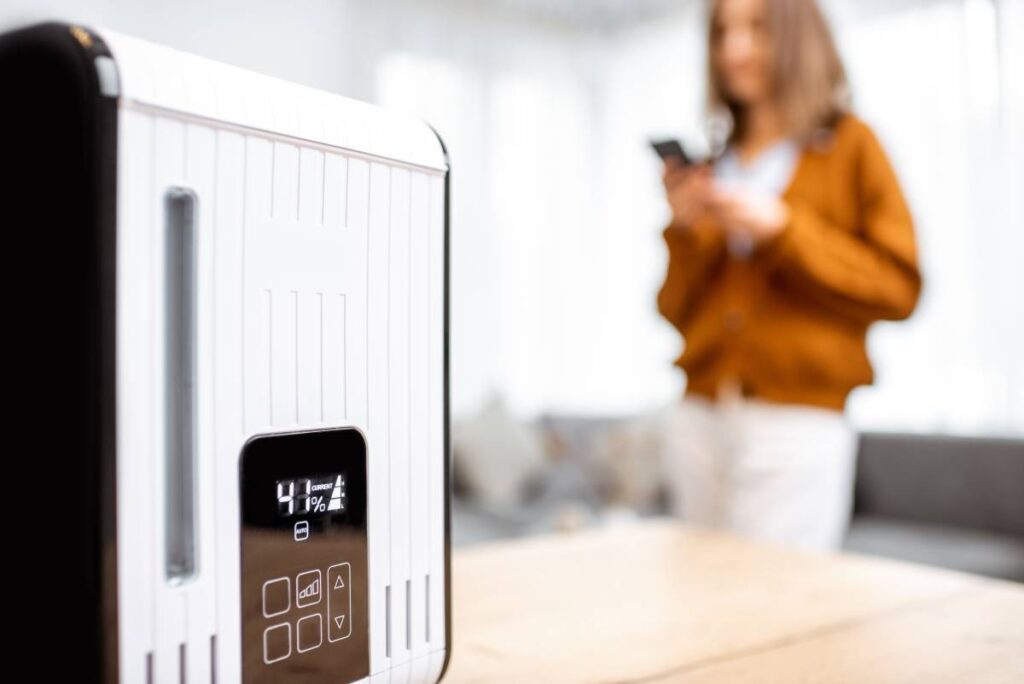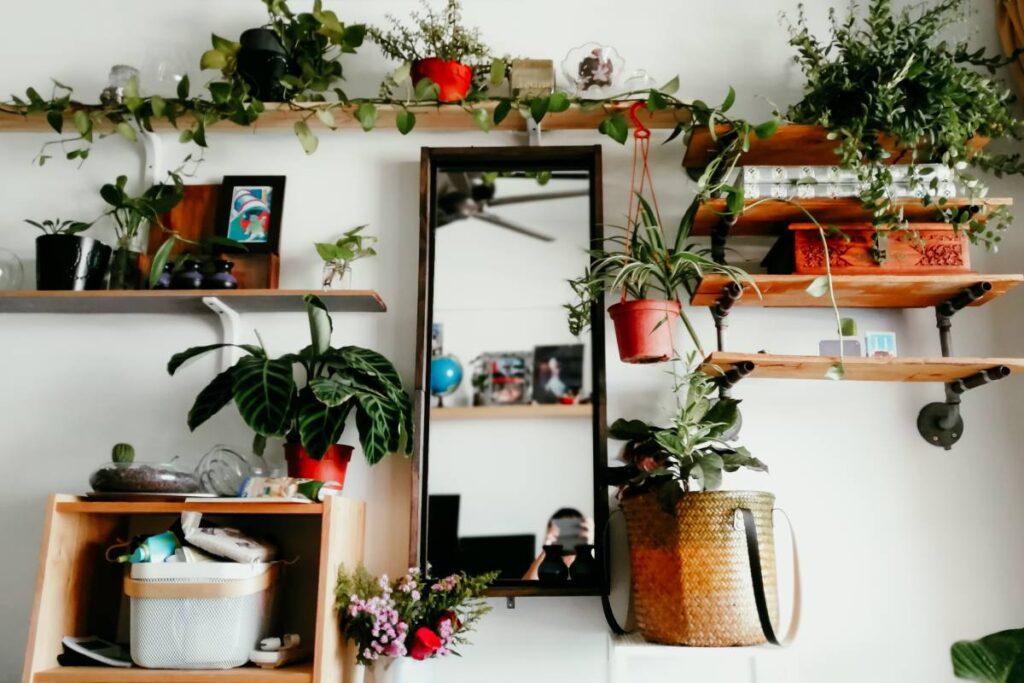As summer heats up, keeping our homes cool becomes a big deal. While AC seems like the obvious choice, there are other ways to stay comfortable without relying solely on energy-intensive cooling systems.
In this article, we’ll check out three key tactics for beating the heat: using plants, managing humidity levels, and maximizing shade. By using nature’s power and making smart choices about how we use our spaces, we can stay cool while being mindful of our environmental impact.
How to keep my house cool in summer
Keeping your house cool in the scorching heat of summer can be a real challenge, but fear not! With some simple tips and tricks, you can transform your home into a cool oasis. Here are some easy-to-follow strategies to beat the heat and stay comfortable all summer long.

- Use Fans Wisely: Fans are your best friends when it comes to staying cool. Ceiling fans, floor fans, and even handheld fans can help circulate air and create a refreshing breeze. Make sure your ceiling fans are set to rotate counterclockwise in the summer to push cool air downwards.
- Block Out the Sun: Direct sunlight streaming through windows can quickly turn your home into an oven. Keep curtains, blinds, or shades closed during the hottest parts of the day to block out the sun’s rays. Consider investing in blackout curtains or reflective window films for added insulation.
- Strategic Ventilation: Open windows strategically to let in cool air during the early morning and late evening when temperatures are lower. Create cross-ventilation by opening windows on opposite sides of your home to encourage airflow.
- Use Cool Bedding: Swap out your heavy comforter for lightweight, breathable bedding made from natural fibres like cotton or linen. A cool, comfortable bed can make all the difference in getting a good night’s sleep during hot summer nights.
- Stay Hydrated: Keeping yourself hydrated is essential for regulating body temperature and staying cool. Drink plenty of water throughout the day, and consider enjoying cool beverages like iced tea or lemonade to help you beat the heat.
- Cook Wisely: Using the oven or stove can generate a lot of heat in your home, so opt for meals that require minimal cooking or use alternative methods like grilling outdoors. You can also prepare meals during the cooler parts of the day and reheat them later.
- Create Shade: If you have outdoor space, consider adding shade structures like umbrellas, awnings, or pergolas to block out the sun and create a cool retreat. Planting trees or installing trellises with climbing plants can also provide natural shade and beautify your outdoor areas.
- Insulate Your Home: Proper insulation can help keep your home cooler in the summer by preventing cool air from escaping and hot air from entering. Check for gaps or leaks around doors, windows, and ducts, and seal them with weatherstripping or caulking.
- Use Air Conditioning Wisely: If you have air conditioning, use it efficiently to keep your home comfortable without breaking the bank. Set your thermostat to the highest temperature you find comfortable, and use programmable thermostats to adjust the temperature based on your schedule.
- Create a Cool Oasis: Designate a cool, comfortable space in your home where you can retreat during the hottest parts of the day. Use fans, portable air conditioners, or evaporative coolers to create a refreshing environment where you can relax and escape the heat.

Does a dehumidifier help you cool in the summer?
Yes, a dehumidifier can help you feel cooler in the summer, albeit indirectly. Here’s how:
- Reducing Humidity: Dehumidifiers work by removing excess moisture from the air, which can make the air feel cooler and more comfortable. High humidity levels can make it harder for your body to cool down through sweating, as sweat evaporates more slowly in humid conditions. By reducing humidity levels indoors, a dehumidifier can help your body cool more efficiently.
- Preventing Mold and Mildew: High humidity can promote the growth of mould and mildew in your home, which not only poses health risks but also contributes to a stuffy and uncomfortable environment. By keeping humidity levels in check, a dehumidifier can help prevent mould and mildew growth, creating a fresher and more pleasant indoor environment.
- Improving Air Quality: Excess moisture in the air can also lead to musty odours and allergen buildups, such as dust mites and mould spores. By removing moisture from the air, a dehumidifier can help improve indoor air quality, making your home feel fresher and more breathable.
While a dehumidifier can help create a cooler and more comfortable indoor environment by reducing humidity levels, it does not directly lower the temperature like an air conditioner does. However, by complementing the cooling effects of an air conditioner or fans, a dehumidifier can enhance overall comfort and help you feel cooler during the hot summer months.

Does having plants in the room make the room cooler?
Having plants in a room can contribute to a cooler environment, but their impact on temperature is relatively minor compared to other cooling strategies. Here’s how plants can help:
- Transpiration: Plants release water vapour through a process called transpiration. This water vapour evaporates into the air, which can have a cooling effect similar to natural evaporation. While this process can slightly increase humidity levels in the immediate vicinity of the plant, it can also help create a more comfortable microclimate.
- Shade and Insulation: Larger plants or trees strategically placed near windows can provide shade, blocking out direct sunlight and reducing solar heat gain in the room. Additionally, plants can act as natural insulators, creating a buffer between indoor and outdoor temperatures. While this insulation effect may be subtle, every little bit helps in keeping your space cooler.
- Air Circulation: Dense foliage can slightly obstruct airflow, but strategically placed plants can also help channel air and promote better circulation within a room. This can be particularly beneficial when combined with fans or natural ventilation, as it helps distribute cool air more effectively.
- Psychological Cooling: Beyond their physical effects, the presence of plants in a room can also contribute to a perception of coolness. Greenery can evoke feelings of freshness and tranquillity, which can help create a more comfortable and relaxed atmosphere, especially during hot weather.
While plants can contribute to a cooler environment in these ways, their impact on temperature regulation is relatively small compared to more direct cooling methods like air conditioning or fans. However, incorporating plants into your home can still be a valuable part of your overall cooling strategy, providing both aesthetic and functional benefits.
Final thought
When it’s scorching hot in summer, every little thing makes a difference. By bringing in some plants, using dehumidifiers, and making the most of shade with smart landscaping and window coverings, we can make our spaces cooler and more comfy without cranking up the AC all the time. These natural cooling tricks not only cut down on energy use and lower bills but also lead to a healthier, more eco-friendly lifestyle. Let’s harness the power of nature and stay cool the greenway this summer.







